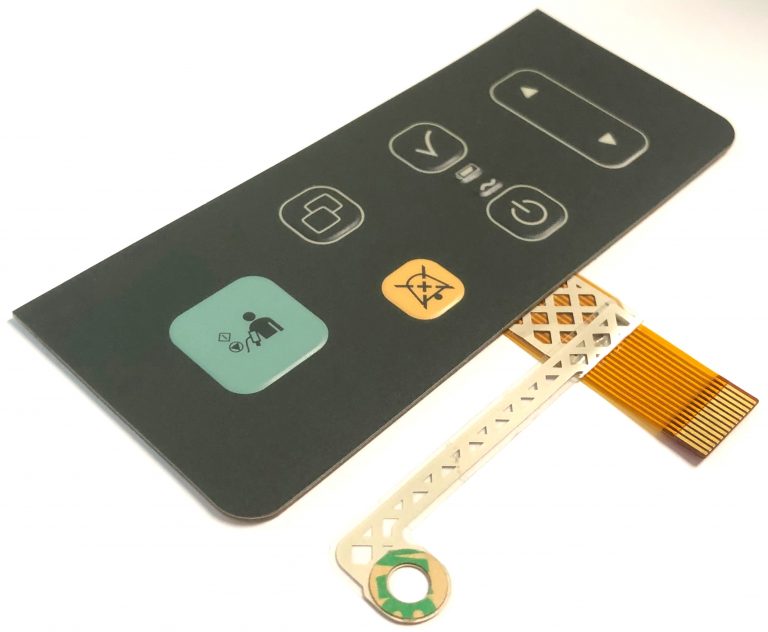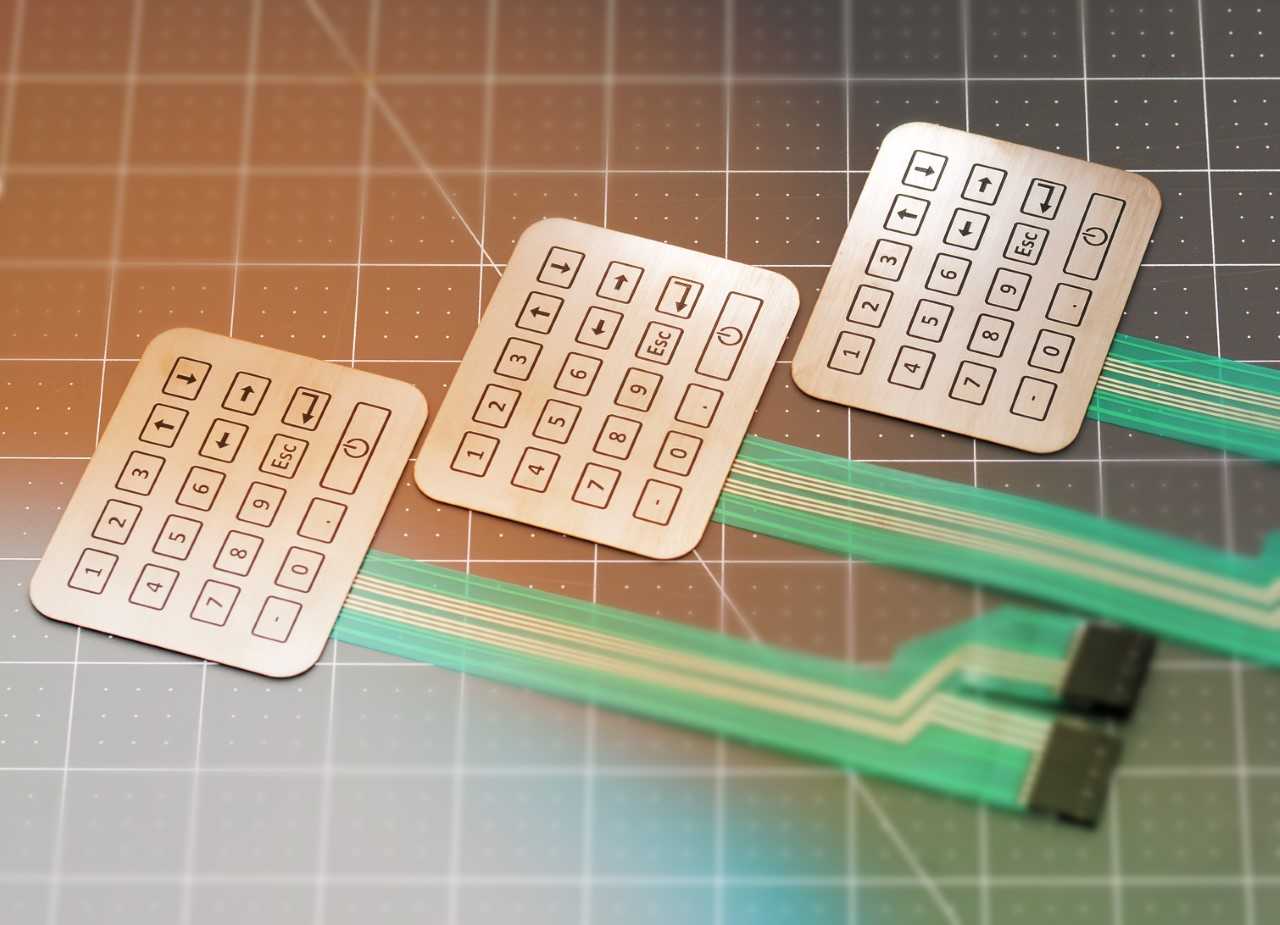Every well-executed product line begins with selecting the right membrane switch manufacturer early on.
Every well-executed product line begins with selecting the right membrane switch manufacturer early on.
Blog Article
Everything About Membrane Layer Change: Understanding Its Layout and Capability
When you think about the control user interfaces in contemporary tools, membrane switches commonly come to mind. These components are much more than just buttons; they blend design and functionality flawlessly. Understanding how they work and what makes them efficient can alter your point of view on day-to-day electronics. There are subtleties to their style and performance that you may not be mindful of. Let's discover what collections membrane layer changes besides various other control systems.
What Are Membrane Switches?

Their smooth nature makes them easy to tidy and resistant to dust and dampness, a crucial feature in lots of settings. Membrane switches can likewise be tailored relating to shape, size, and graphics, allowing producers to create one-of-a-kind interfaces customized to specific products. Plus, they're lightweight and thin, which assists in minimizing the general mass of tools. On the whole, membrane layer buttons play a significant function in improving user experience throughout a broad array of applications.
Just How Membrane Layer Switches Job
When you press a key on a membrane layer button, it triggers an uncomplicated yet efficient device. membrane switch manufacturer. The leading layer, often made of adaptable product, pushes down onto a conductive layer underneath it.
You'll observe that the tactile responses varies based on the button style, providing either a soft click or a much more obvious action. When you launch the trick, the membrane returns to its initial setting, reopening the circuit and stopping the signal. This procedure takes place almost instantly, making sure a responsive individual experience.
Membrane buttons are preferred because of their toughness and resistance to dust and moisture, making them perfect for various applications, from family home appliances to clinical tools. Comprehending this procedure assists you appreciate their prevalent use.
Key Elements of Membrane Layer Buttons
Comprehending the key components of membrane layer buttons is basic for grasping their functionality and style. At the core, you'll locate the graphic overlay, which gives the visual interface for individuals. Below that, there's a spacer layer that divides the circuit layers, making certain that they don't make call until pushed. The circuit layer is where the magic occurs; it consists of conductive traces that complete the circuit when you push the switch. An additional essential element is the sticky backing, allowing the switch to stick to surfaces securely. Ultimately, the protective layer guards against environmental aspects and put on, expanding the switch's life expectancy. Each element plays a substantial role in guaranteeing trustworthy efficiency and user communication. By understanding these elements, you'll obtain insight right into how membrane switches over operate and their significance in numerous applications.
Products Made Use Of in Membrane Layer Switch Design
The performance and resilience of membrane layer switches over heavily rely on the products used in their design. You usually come across polyester and polycarbonate as main substrates because of their outstanding strength and versatility. These products stand up to scratches and chemicals, making them perfect for requiring environments.
The conductive layers usually use silver or carbon, chosen for their integrity and conductivity. membrane switch manufacturer. Silver offers exceptional performance, while carbon is an affordable option. For the overlay, you may think about a matte or glossy finish, depending on your visual demands and user experience
Make certain to select adhesives that endure ecological aspects like temperature and moisture. Picking the appropriate materials will certainly assure your membrane layer button stands the test of time.
Design Considerations for Membrane Layer Switches
While designing membrane switches, it's important to consider numerous elements that influence their functionality and user experience. Beginning by focusing on the format and button size; make sure they're instinctive and easy to navigate. Take into consideration the responsive comments you wish to offer-- will users need a visible click or a softer touch? In addition, think regarding the materials you'll utilize, as they'll influence resilience and aesthetic appeals.
Validate your design suits environmental factors, like wetness or temperature variations, which can influence efficiency. By very carefully taking into consideration these aspects, you'll develop a membrane layer button that improves functionality and fulfillment.
Applications of Membrane Switches
Membrane layer buttons are versatile components discovered in numerous applications, from commercial devices to customer electronic devices. You'll see their influence in devices here are the findings that need sturdy user interfaces and in devices that take advantage of smooth designs. Comprehending these applications aids you appreciate the capability and functionality of membrane layer buttons in daily innovation.
Industrial Devices Use
When you're looking to enhance the capability of industrial tools, membrane layer buttons use a reliable solution that combines resilience with user-friendly layout. These switches are ideal for harsh settings, supplying resistance to dust, moisture, and chemicals. Embrace membrane layer buttons to simplify your procedures and boost overall performance.
Customer Electronics Assimilation
In the domain name of consumer electronics, membrane switches play a necessary duty in improving customer communication and gadget performance. You'll discover them in devices like microwaves, remotes, and video gaming consoles, providing a seamless method to connect with modern technology. Their sleek design permits simple integration right into different items, making controls instinctive and straightforward. With their ability to integrate graphics and backlighting, you can appreciate a modern-day aesthetic that matches the device's general appearance. Membrane switches also guarantee sturdiness and resistance to dirt and moisture, expanding the life-span of your electronic devices. By picking membrane buttons, you enhance not just the functionality but also the design of your gadgets, making daily communications smooth and enjoyable.
Benefits and Downsides of Membrane Layer Buttons
While membrane switches provide an array of advantages, they likewise feature some disadvantages that you ought to consider. One substantial benefit is their portable style, making them excellent for space-constrained applications. They're additionally cost-efficient, providing a durable remedy with a reduced manufacturing cost. On top of that, their seamless surface is easy to tidy, enhancing hygiene in atmospheres More about the author like medical facilities.

Nonetheless, there are drawbacks. Membrane layer buttons can have a shorter life expectancy contrasted to mechanical buttons, especially under heavy usage. They can also be less tactile, which might influence individual comments during procedure. If damaged, fixing them can be tough and commonly needs total substitute. Inevitably, their level of sensitivity to severe temperatures and ecological problems may limit their efficiency in certain setups. Stabilizing these pros and cons will aid you identify if membrane buttons are the ideal suitable for your project.
Regularly Asked Questions
The Length Of Time Do Membrane Changes Commonly Last?
Membrane switches over typically last in between 5 to ten years, relying on usage and ecological problems. You'll intend to assess variables like wear, direct exposure to moisture, and temperature level changes to assess their longevity effectively.
Can Membrane Changes Be Personalized for Certain Layouts?
Yes, you can tailor membrane buttons to fit certain designs (membrane switch manufacturer). You'll have the freedom to pick colors, forms, and designs that match your project's requirements, ensuring they blend effortlessly with your total aesthetic
What Is the Expense Variety for Membrane Layer Change Production?
The price array for membrane switch production normally drops between $1 and $10 each, relying on aspects like layout complexity, quantity, and materials. You can get quotes from suppliers to find the finest alternative.

Are Membrane Switches Over Water-proof or Immune?
Membrane switches can be developed to be water-proof or resistant, relying on products utilized and building and construction techniques. If you need them for damp atmospheres, ensure you define those requirements during the style procedure.
Just How Do Membrane Switches Over Compare to Standard Buttons?
Membrane layer buttons are normally thinner and a lot more adaptable than traditional buttons, offering a sleek design. They're usually simpler to clean and integrate, but could not give the tactile comments you're utilized to with mechanical options.
Conclusion

Report this page